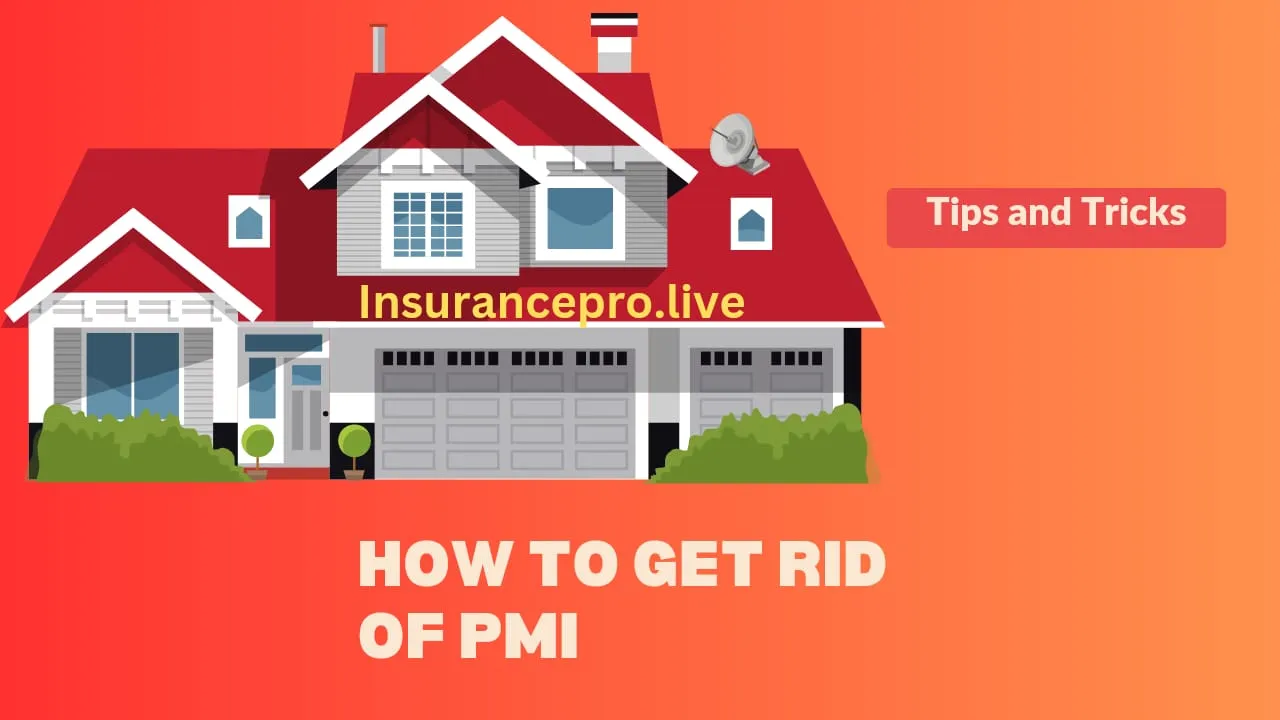PMI, or Private Mortgage Insurance, How to Get Rid of PMI is something many homeowners have to deal with. If you’re paying PMI, you might be wondering how to stop. This guide will explain everything you need to know about getting rid of PMI and saving money on your monthly mortgage payments.
What is PMI?
Before we dive into How to Get Rid of PMI, let’s make sure we understand what it is. PMI is a type of insurance that protects the lender (the bank) if you stop paying your mortgage. Usually, you have to pay PMI if you put down less than 20% when you buy your house. It’s an extra cost on top of your regular mortgage payment.
Why Would You Want to Get Rid of PMI?
Getting rid of PMI can save you a lot of money. Here’s why:
1. Lower monthly payments:
Without PMI, your mortgage payment will be smaller each month.
2. More money for you:
The money you save can be used for other things, like home improvements or savings.
3. Faster loan payoff:
You can use the saved money to pay off your mortgage faster.
Now, let’s look at the different ways you can get rid of PMI.
1. Wait for Automatic PMI Cancellation
By law, lenders must automatically cancel PMI when your loan balance reaches 78% of the original value of your home. This is based on your original payment schedule, not on extra payments you might have made.
What you need to do:
Keep making your regular mortgage payments on time.
Wait until your loan balance drops to 78% of your home’s original value.
The lender should cancel PMI automatically at this point.
Remember, this can take many years, depending on your loan terms and how much you borrowed.
2. Request PMI Cancellation at 80% Loan-to-Value Ratio
You don’t have to wait for automatic cancellation. You can ask your lender to cancel PMI when your loan balance reaches 80% of your home’s original value.
Steps to take:
1. Check your mortgage statements to see your current loan balance.
2. Calculate 80% of your home’s original value (the price you paid when you bought it).
3. If your loan balance is at or below this amount, contact your lender to request PMI cancellation.
4. You might need to get your home appraised to prove its value hasn’t dropped.
Make sure you’ve made your payments on time. Lenders usually require a good payment history before they’ll cancel PMI early.
3. Refinance Your Mortgage
If your home’s value has gone up a lot since you bought it, refinancing might help you get rid of PMI.

How it works:
1. You get a new loan to replace your old one.
2. If your new loan is for 80% or less of your home’s current value, you won’t need PMI.
Things to consider:
Refinancing costs money, so make sure the savings are worth it.
You might get a different interest rate on your new loan.
It’s a good option if you can also lower your interest rate.
4. Make Extra Payments
Paying extra on your mortgage can help you reach 80% loan-to-value faster.
Tips for making extra payments:
Put any extra money towards your principal balance.
Even small extra payments can add up over time.
Check with your lender to make sure extra payments are applied correctly.
5. Get a New Home Appraisal
If your home’s value has increased, a new appraisal might show you have more than 20% equity.
Steps to take:
1. Contact your lender to ask about their rules for canceling PMI based on increased home value.
2. If they allow it, hire a professional appraiser.
3. If the appraisal shows your loan balance is 80% or less of your home’s current value, request PMI cancellation.
Remember, you’ll have to pay for the appraisal, which can cost a few hundred dollars.
6. Home Improvements
Making improvements to your home can increase its value, potentially helping you reach 20% equity faster.
Ideas for home improvements:
kitchens or bathrooms Updating
Adding living space
Improving energy efficiency
Enhancing curb appeal
After making improvements, you might need a new appraisal to prove the increased value to your lender.

Common FAQs About How to Get Rid of PMI
1. How long does PMI usually last?
It depends on your down payment and loan terms, but it often takes 5-10 years to reach 80% loan-to-value.
2. Can I cancel PMI if I have an FHA loan?
FHA loans have different rules. You might need to refinance to a conventional loan to get rid of mortgage insurance.
3. Will my lender automatically cancel PMI when I reach 20% equity?
Not always. You usually need to request cancellation when you reach 80% loan-to-value.
4. What if my home’s value has decreased?
If your home’s value has gone down, it might take longer to reach 80% loan-to-value and cancel PMI.
5. Can I cancel PMI if I’ve missed mortgage payments?
Lenders usually require a history of on-time payments before they’ll consider canceling PMI early.
Conclusion
Getting rid of How to Get Rid of PMI can save you a lot of money over time. Whether you wait for automatic cancellation, make extra payments, or consider refinancing, there are several ways to stop paying PMI. How to Get Rid of PMI The best method for you depends on your specific situation, including how much equity you have and how much your home is worth now. Remember to keep track of your loan balance and home value. When you think about How to Get Rid of PMI you’ve reached 80% loan-to-value, so don’t hesitate to contact your lender. Be prepared to provide proof of your home’s value and show that you’ve made your payments on time.
By understanding your options and taking action when you can, you’ll be able to stop paying How to Get Rid of PMI and keep more of your hard-earned money each month. This can help you build wealth faster and achieve your financial goals sooner.






